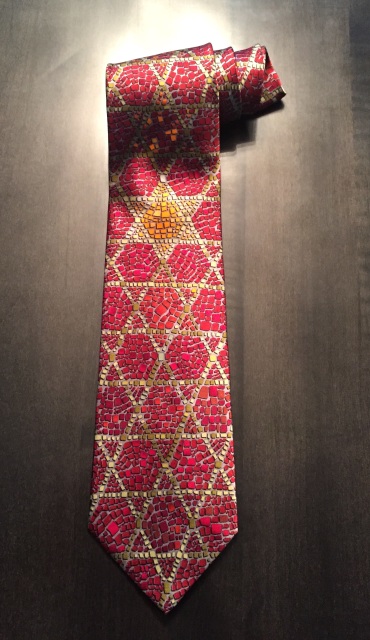- Ties (Neckwear)
- >
- Star Mosaic Red Silk Tie
SKU:
Star Mosaic Red Silk Tie
$36.00
$25.00
$25.00
On Sale
Unavailable
per item
Many scholars have attempted to trace the Star of David back to King David. However no Jewish literature or artifacts document this claim. The Hexagaram has become the symbol of the Jews though it's origin may surprise you.
The evolution of the six-pointed star, the "Magen David," literally the "Shield of David" also known as the hexagram, or more rarely, Solomon's Seal, is long and complex. Although it is now the most common and universally recognized sign of Judaism and Jewish identity, both within and outside of the Jewish community, it has only achieved this status in the last two hundred years. Before that it was predominantly associated with magic or with the insignia of individual families or communities. In spite of its unclear history, Jews have long been attracted to this design and have wanted to attribute to it venerable origins. The earliest known Jewish use of the hexagram was as a seal in ancient Israel (6th century B.C.E.) and then eight centuries later in a synagogue frieze in Capernaum. These early hexagrams may have been only ornamental designs. Although scholars have attempted to trace the Star of David back to King David himself; to Rabbi Akiva and the Bar Kokhba rebellion (135 C.E.); or to kabbalists, especially Rabbi Isaac Luria (16th century), no Jewish literature or artifacts document this claim. Rather, all evidence suggests that the early use of the hexagram was limited to Jewish magic, probably dating back to the 6th century C.E. Legends connect this symbol with the "Seal of Solomon," the magical signet ring used by King Solomon to control demons and spirits. Although the original ring was inscribed with the Tetragrammaton, the sacred Four-Letter Name of God, medieval amulets imitating this ring substituted the hexagram or pentagram (five-pointed stare), often accompanied by rampant lions, for the sacred Name. The star inscribed on these rings was usually called the Seal of Solomon." In the Middle Ages, hexagrams appear frequently on churches, but rarely in synagogues or on Jewish ritual objects. It was the menorah that served as the primary Jewish symbol from antiquity until the post-Renaissance period, not the "Jewish star." The Magen David gained popularity as a symbol of Judaism when it was adopted as the emblem of the Zionist movement in 1897, but the symbol continued to be controversial for many years afterward. When the modern state of Israel was founded, there was much debate over whether this symbol should be used on the flag. Today, the Magen David is a universally recognized symbol of Jewry. It appears on the flag of the state of Israel, and the Israeli equivalent of the Red Cross known as the Red Magen David.



